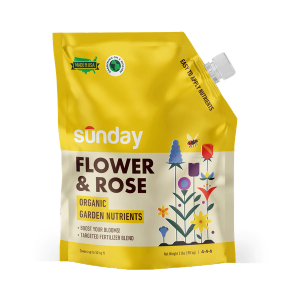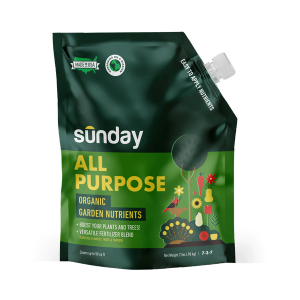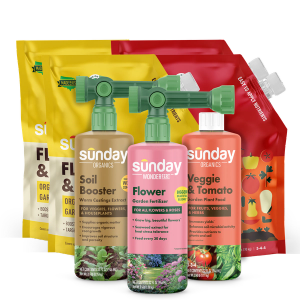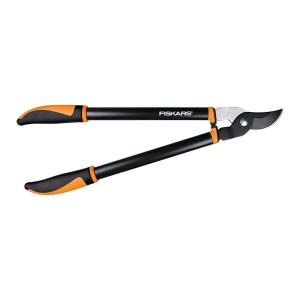Why choose potting mix over potting soil?
We recommend using an organic potting mix instead of potting soil for your gardening needs. Potting mixes are engineered using sterile materials, offering fewer nutrients and very little biological activity, which gives you more control over your growing environment. Compared to potting soil, potting mixes retain moisture more effectively while ensuring sufficient airflow to prevent plant flooding.
Potting soil tends to hold more moisture, so in a container, it can cause plants to become waterlogged. Potting soil can also introduce weed seeds and insects to your indoor plants.
Choosing a potting mix
When choosing a potting mix, find a clean, organic potting mix that doesn’t include any ingredients like styrofoam or additional fertilizer, and isn't waterlogged.
Check for styrofoam on the packaging
Adding pollutants like styrofoam to your growing environment will only pollute the ecosystem. Styrofoam is classified as a non-biodegradable pollutant, and it takes 500 years to decompose. We don’t believe that any non-biodegradable ingredient belongs in your soil.
Avoid potting mix with added fertilizer
We recommend using a fertilizer-free potting mix so you can control your nutrient inputs on an as-needed basis, rather than just relying on whatever happens to be in the mix. Plus, fertilizers can lose their potency over time. There's no telling how long that fertilizer has been sitting or how potent it still is at the point of application.
Sunday Tip:
For in-ground growing, complete a soil test so that you can choose the right amendments and nutrients to cultivate better soil health.
Don't settle for waterlogged potting mix
Once you make sure that your potting mix has the right ingredients, be sure to grab a bag that is dry and light. Waterlogged potting mixes can rot and diminish in mineral value.
Good potting mix needs sand and compost
Unfortunately, it's usually not enough to just purchase high-uality potting mix. For best results, combine your potting mix with nutrient-rich compost and clean, coarse sand.
How to get good compost
Composting is a perfect way to put organic waste to work for you. Whether you want to start a vermicompost or a thermophilic compost.
Psst. Check out these tips to get the most out of your compost.
Pick the right sand
Sand is a great way to prevent overhydration, add some air to your compost mix, and create a strong environment to support your plant growth. We recommend using coarse sand. Overly refined sand will make your mix too dense and prevent air and moisture flow.
Indoor plants, outdoor pots, and planter boxes
For indoor plants, outdoor containers, and planter boxes, combining potting mix with compost for topdressing is ideal. We recommend using:
- 60% potting mix or coconut coir
- 20% compost
- 20% sand
If you use coconut coir, rinse it well before adding it to your planter or pot. For indoor plants like succulents that don’t require as much water, try upping the sand to 25%-30% of the overall mix.
Raised beds and garden beds
For outdoor growing boxes, garden beds, or raised beds, many homeowners tend to utilize mainly bulk topsoil. Unfortunately, topsoil nutrient levels are often compromised, and you'll still need to add compost rich with organic matter to replenish the overall soil health. Instead of low-quality topsoil, we recommend using the same 60% coconut coir or potting mix, 20% compost, and 20% sand in your garden bed or raised bed to start a thriving growing environment.
Sunday Tip:
If you're going to use topsoil in your raised beds, make sure it's only used in the bottom of the container, and that it contains less than 30% clay, less than 70% sand, and less than 70% silt. And don’t forget to amend your soil with proper nutrients to support plant life.
Since raised beds generally have an open bottom, water drainage is typically not an issue. With an open-bottomed raised bed, water will drain more freely, so you won’t need to be as selective when watering, even if you use potting soil.
With a great foundation of clean soil mix, rich compost, and clean sand, you can start a vegetable garden, pot your native plants, and get more growth out of your grow boxes—just add sun and water.
Cited sources
Bagged potting mixes and garden soils for home gardeners. University of Massachusetts Amherst.
What is the best soil for potted plants? University of New Hampshire Cooperative Extension.



















